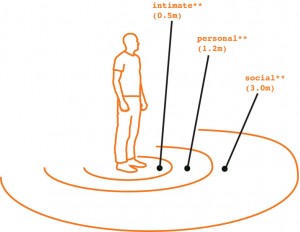“I have assumed, and attempted to demonstrate, that music and dialogue, while they reinforce the photographic image, are really subsidiary lines in the total film composition.” — George Bluestone.1 “The role which sound is to play in film is much more significant than a slavish imitation of naturalism . . . ; the first function …
54 results for
Permanent link to this article: https://www.screenplayology.com/content-sections/screenplay-form-content/3-7/
3.5. character, action, and dialogue
. . . there is no such thing [as character]. It doesn’t exist. The character is just habitual action. ‘Character’ is exactly what the person literally does in pursuit of the superobjective.” — David Mamet1 3.5.1. Overview. If we take Mamet at his word, I guess we can stop here. There’s no such thing as …
Permanent link to this article: https://www.screenplayology.com/content-sections/screenplay-form-content/3-5/
3.4. screenplay time & space
The screenwriter creates filmic time on paper. The production people break it apart and produce filmic time in bits and pieces on film.” — Margaret Mehring1 Although production and set designer — together with director and cinematographer — are ultimately in charge of the setting’s realization, a script will already indicate whether the film’s requirements …
Permanent link to this article: https://www.screenplayology.com/content-sections/screenplay-form-content/3-4/
2.4. genre studies
“In short, to talk about the ‘Western’ (arbitrary definitions apart) is to appeal to a common set of meanings in our culture. From a very early age most of us have built up a picture of a ‘Western’. We feel that we know a ‘Western’ when we see one, though the edges may be rather …
Permanent link to this article: https://www.screenplayology.com/content-sections/paths-problems-in-screenplay-studies/2-4/
3.1. classical screenplay structure
SCREENPLAYS ARE STRUCTURE.” — William Goldman1 . . . the teaching of ‘structure’ has in many venues supplanted the teaching of writing.” — Howard Rodman2 3.1.1. Overview. Goldman’s assertion that screenplays are structure is actually rather modest. In fact, all narrative texts are structure, their content inseparable from their formal qualities. Facets of structure include …
Permanent link to this article: https://www.screenplayology.com/content-sections/screenplay-form-content/3-1/
2.5. theme & ideology
“. . . the young man or woman writing today has forgotten the problems of the human heart in conflict with itself which alone can make good writing because only that is worth writing about, worth the agony and the sweat.” — William Faulkner1 2.5.1. Overview. Why do screenwriters write what they write? This question …
Permanent link to this article: https://www.screenplayology.com/content-sections/paths-problems-in-screenplay-studies/2-5/
2.2. privilege of permanence
. . . the screenplay represents a literature in flux.” — Claudia Sternberg1 2.2.1. Overview. William Goldman introduces his script for Butch Cassidy and the Sundance Kid, noting that, “There are so many versions of a screenplay, it’s difficult to know which one might be most beneficial for reprinting.”2 The fact that finality eludes us …
Permanent link to this article: https://www.screenplayology.com/content-sections/paths-problems-in-screenplay-studies/2-2/
1.1. history of scripting and the screenplay
Originally the screenplay was called a scenario, or continuity script, and consisted of a list of scenes that described the silent action and camera angles. These first screenplays evolved from the economic necessity to pre-plan rather than rely on costly extemporaneous scene development on the set. Later, when sound on film was invented, words, sound …
Permanent link to this article: https://www.screenplayology.com/content-sections/screenplay-style-use/1-1/
2.1. issues of authorship
“. . . it is language which speaks, not the author . . .” — Roland Barthes 1 I remember the moment I was first told about the existence of the auteur theory. I listened and listened as the explanation went on, and all I could think was this: ‘What’s the punch line?’” — William …
Permanent link to this article: https://www.screenplayology.com/content-sections/paths-problems-in-screenplay-studies/2-1/
resources
Books and Journals on Screenplay Studies. Analysing the Screenplay by Jill Nelmes. The Screenplay: Authorship, Theory and Criticism by Steven Price. Screenwriting: History, Theory, and Practice by Steven Maras. Script Culture and the American Screenplay by Kevin Alexander Boon. Written for the Screen: The American Motion-Picture Screenplay as Text by Claudia Sternberg. Framework: A History …
Permanent link to this article: https://www.screenplayology.com/resources/

